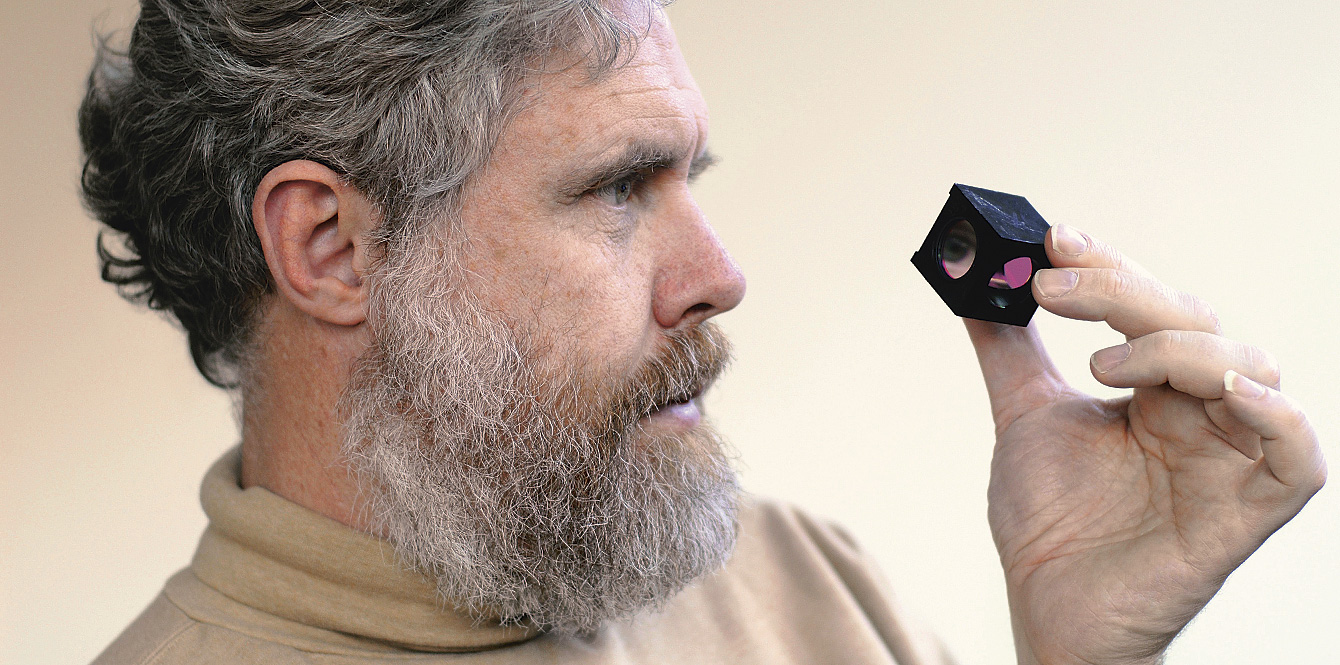
Geneticist George Church is behind one of the most ambitious scientific projects ever undertaken: human genome sequencing. He explains the benefits of this type of participatory research project.
IN VIVO What has the Human Genome Project – a scientific feat in itself, completed in 2003 – accomplished?
George Church It gave us a reference genome. But in retrospect, that’s not what we needed. We needed vast quantities of genetic profiles to compare them and study how they interact with the environment of different people.
That’s the goal of the Personal Genome Project, launched in 2004.
IV Tell us about that project...
GC This database, begun in Boston, is the only one of its kind in the world. Today it contains the genetic profiles of 3,000 people from four different countries. Two hundred of them have delivered complete genome sequences. But we expect this number to increase rapidly with the spectacular drop in the cost of genetic sequencing (editor’s note: less than 1,000 Swiss francs). Anyone can participate. All you need to do is submit DNA samples, ideally along with your medical record, which contains information on your environmental traits. All this information is then put on an open platform that can be accessed by researchers worldwide.
IV What are they going to do with all that information?GC Medically, the main goal is to develop procedures to advise and monitor patients that carry a certain gene mutation that could increase their predisposition to a serious disease, like Tay-Sachs (editor’s note: a neurodegenerative disorder) or certain types of breast cancer. It can take different forms. For example, we can study the probable effects of one person having a child with another given person, recommend tests when the baby is born and determine what foods to proscribe. Or, we can advise someone to have preventive surgery to remove certain tissue or begin taking one aspirin a day.
IV And what purpose will this huge amount of data serve for research?
GC It can be used to study the development of genetic diseases and understand them better.
We have developed a new technique called CRISPR, where a mutation – once it has been identified as the probable cause of a disease – is introduced into the DNA of a small clump of human cells called an organoid. We can then study its effects on the cells to gain a better understanding of the disease. In other words, we’re going from simply noting a correlation between mutation and disease to actually seeking a cause. The modified organoid can also be used to test different therapies.
IV Will medications eventually be developed to specifically target these mutations?
GC Of course. Over 2,000 gene therapies are currently being clinically tested. Glybera (for patients with a gene mutation that makes them more susceptible to pancreatitis) has already been approved in Europe. These gene therapies represent the pinnacle in personalised medicine. They modify the DNA within cells to make them more closely resemble a “healthy”, or even better-than-normal, person.
When they agree to give us their data, patients are aware that they can no longer control who has access to it or what is done with it.
IV What are the direct benefits for patients who donate their genetic data to the Personal Genome Project?
GC We inform them if we find any indications in their genome that they have a predisposition to a certain disease. But you have to remember that only a small number of diseases can be predicted this way and, of those, only a smaller number still can be treated or prevented. Despite this low probability, it’s always worth it to participate in this type of exam. You never know what a gift contains until you open it.
IV By agreeing to put all their data online, these people are basically giving up their right to medical secrecy, right?
GC That’s one of the basic conditions of the Personal Genome Project. When they agree to give us their data, patients are aware that they can no longer control who has access to it or what is done with it. We make sure that they sign an open consent. At the same time, we avoid making false promises. If this data is stolen by a hacker, for example, it can very easily be decoded and its source identified.
IV Isn’t that dangerous?
GC Today, nobody is completely protected from this type of incident. Not long ago, the United States Department of Veterans Affairs lost the medical records of 26 million people. But laws are being passed to prevent discrimination by employers or insurers based on someone’s genetic data – like the law passed in the United States in 2008 – making the issue less sensitive.
IV Who keeps the data shared online through the Personal Genome Project?
GC Participants can access their data at any time and ask for a copy. However, data is also made available to researchers worldwide, who can do what they want with the information without requesting authorisation. The data belongs to everyone.
IV What is the value of this data? Shouldn’t people be paid for donating their genetic material?
GC Some things only have value when they are pooled and shared freely. Just think about the information contained in the online encyclopaedia, Wikipedia. If we started paying for this information, there would be a huge number of pay-for-access databases, making sharing in this way impossible.
American George Church, Professor of Genetics at Harvard Medical School, is recognised worldwide as a pioneer in genome sequencing. He began the Human Genome Project in 1990. Once this genetic inventory of humans was complete, George Church launched the Personal Genome Project. In early 2013, the genetic researcher made international headlines with another ambition: cloning a Neanderthal.